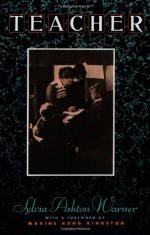
|
| Name: _________________________ | Period: ___________________ |
This test consists of 5 multiple choice questions, 5 short answer questions, and 10 short essay questions.
Multiple Choice Questions
1. What teacher did Ashton-Warner describe as being on the "high mountain" at the beginning of "Workbook"?
(a) Buddha.
(b) Lo Tung.
(c) Christ.
(d) Moses.
2. In what season was the story of the Little Red Hen told?
(a) Summer.
(b) Spring.
(c) Fall.
(d) Winter.
3. What educational thinker was quoted at the beginning of "Organic Writing"?
(a) Rousseau.
(b) John Dewey.
(c) C.E. Beebe.
(d) Horace Mann.
4. How long did the reading period last?
(a) 45 minutes.
(b) 25 minutes.
(c) 30 minutes.
(d) 15 minutes.
5. What did the junior assistant or a senior pupil sometimes do with the younger students during shared reading?
(a) Do a science experiment.
(b) Sing.
(c) Read a story.
(d) Dance.
Short Answer Questions
1. How did Ashton-Warner describe the worst assistant she ever had in the classroom?
2. How many other books preceded the development of the Maori transitional readers?
3. What was the most powerful word under the "fear" category?
4. What color ears did Ashton-Warner say she sometimes saw in children's illustrations?
5. To what animal was Ashton-Warner handed over in a Maori child's made-up story?
Short Essay Questions
1. What did Ashton-Warner mean by "tone" in the classroom?
2. What is wrong with the cadence in many published first readers?
3. Why was it important for the teacher to be a good conversationalist in the classroom?
4. What was Ashton-Warner's reaction to the sometimes violent imagery used in the children's stories?
5. Why did Ashton-Warner believe that standardized reading texts were damaging to children?
6. Why did Ashton-Warner describe children's minds as volcanoes and how did that affect her teaching?
7. What did Plato believe about dance?
8. Why did Ashton-Warner say that the discussions of the children's stories were the "most significant" feature of the class?
9. Why did Ashton-Warner find the European and American early readers two-dimensional?
10. What was the importance of the "inner illustration" in the children's self-written stories?
|
This section contains 847 words (approx. 3 pages at 300 words per page) |

|




